Abstract
Light stimulates the germination of spores of the fern Onoclea sensibilis L. At high dosages, broad band red, far red, and blue light promote maximal germination. Maximal sensitivity to these spectral regions is attained from 6 to 48 hours of dark presoaking, and all induced rapid germination after a lag of 30 to 36 hours. Maximal germination is attained approximately 70 hours after irradiation. Dose response curves suggest log linearity. The action spectrum to cause 50% germination shows that spores are most sensitive to irradiation in the red region (620-680 nm) with an incident energy less than 1000 ergs cm−2; sensitivity decreases towards both shorter and longer wavelengths. Although the action spectrum is suggestive of phytochrome involvement, photoreversibility of germination between red and far red light has not been demonstrated with Onoclea spores. An absorption spectrum of the intact spores reveals the presence of chlorophylls and carotenoids. Since the presence of 3-(3,4-dichlorophenyl)-1,1-dimethylurea does not inhibit germination, it is concluded that photosynthesis does not play a role in the germination process.
Full text
PDF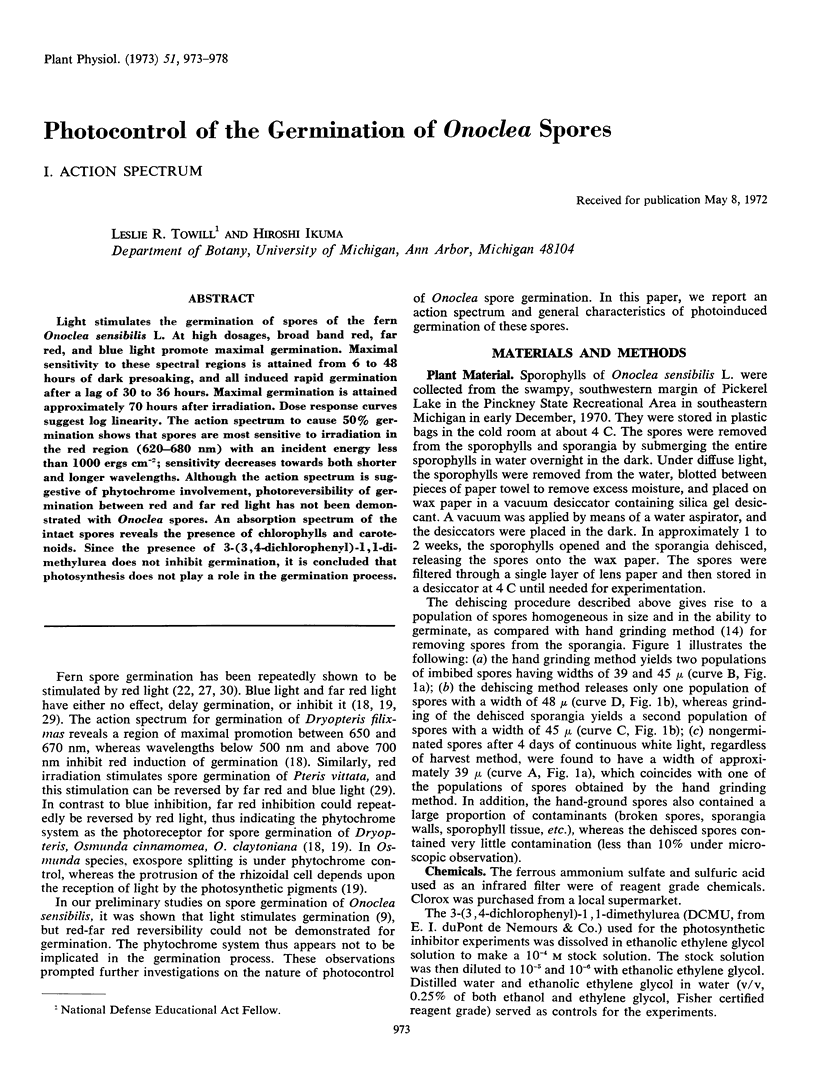
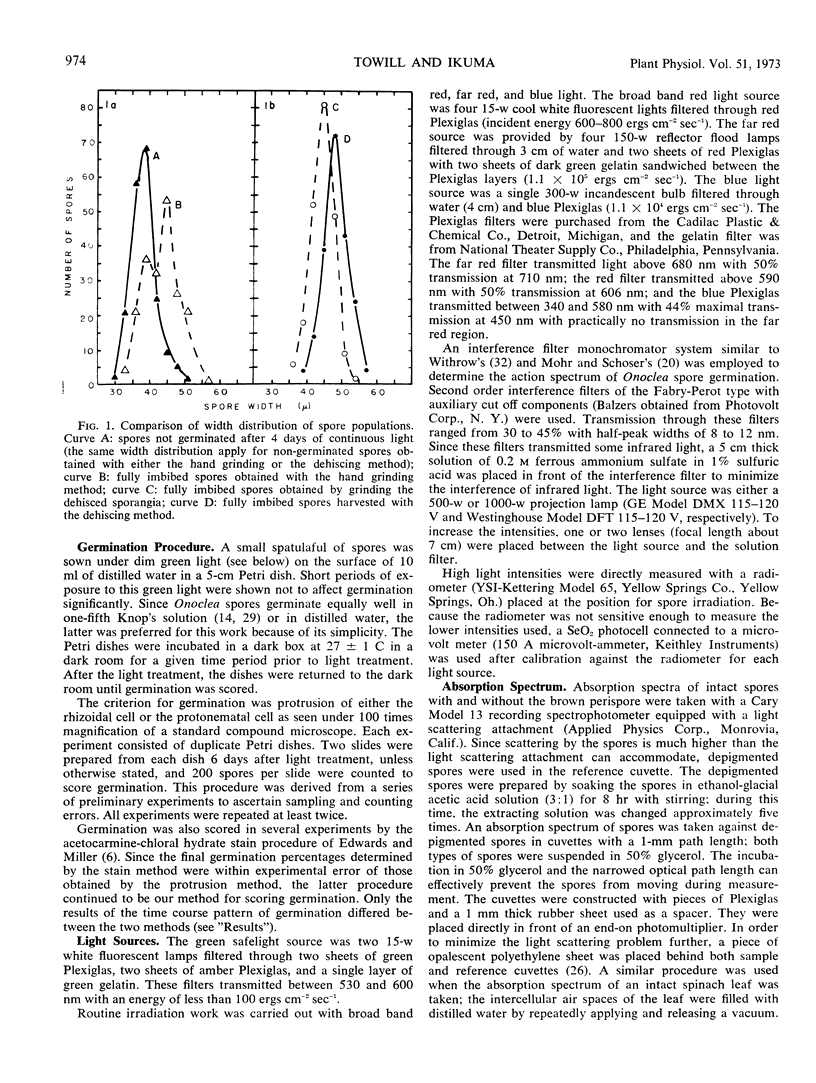
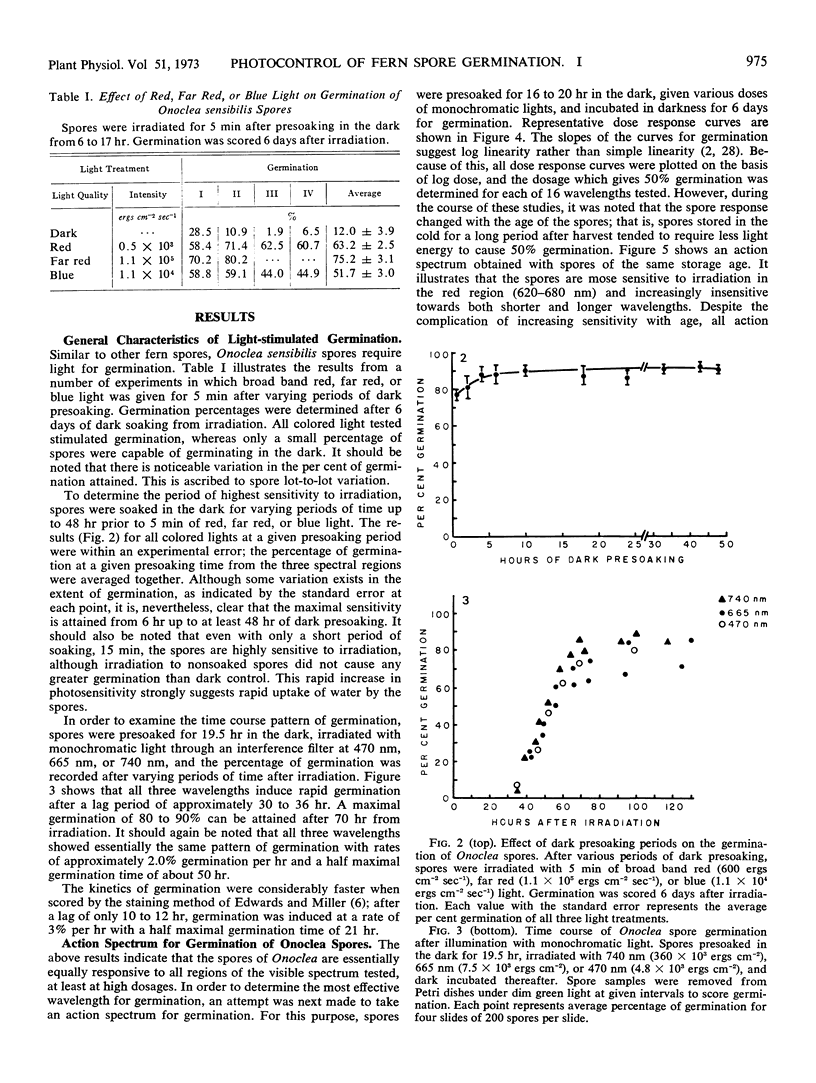
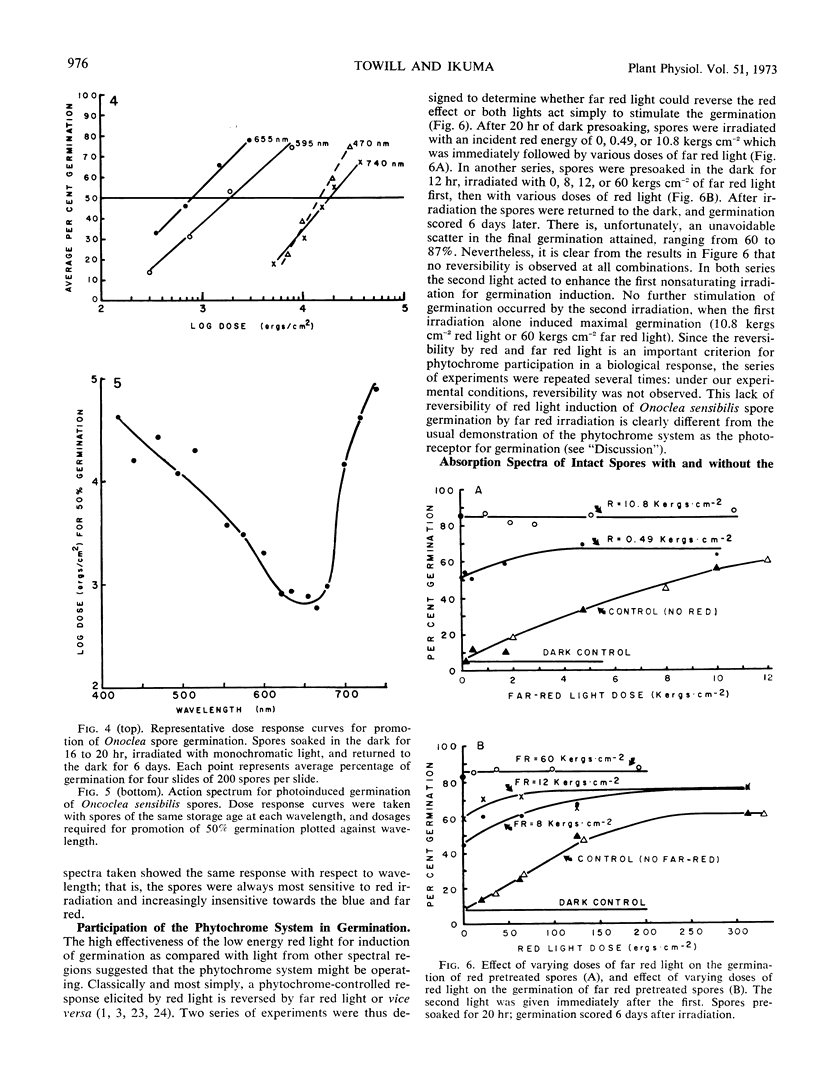
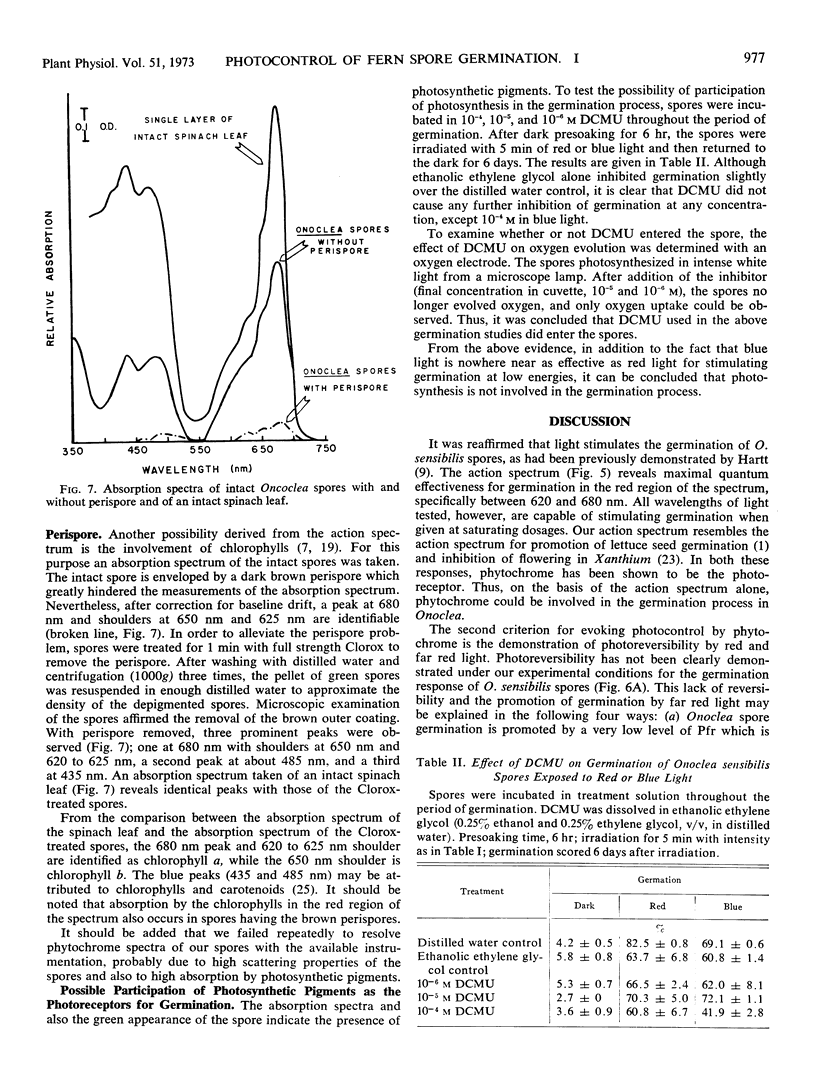
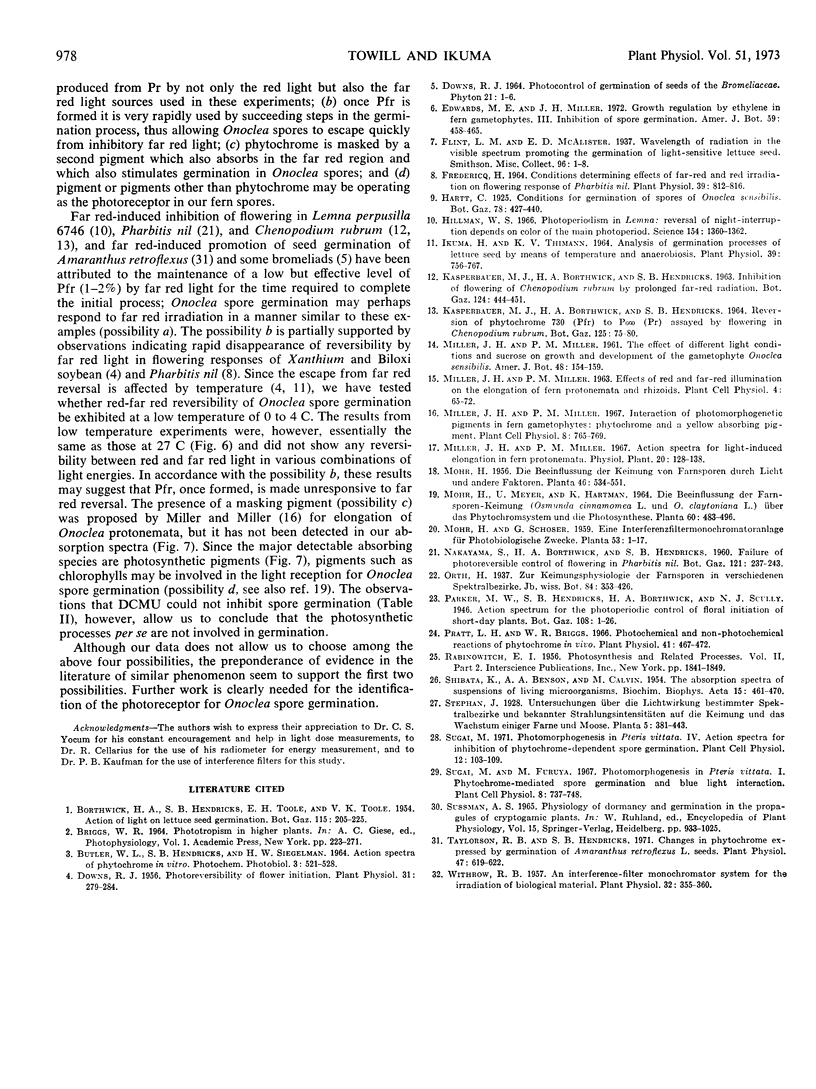
Selected References
These references are in PubMed. This may not be the complete list of references from this article.
- Fredericq H. Conditions Determining Effects of Far-Red and Red Irradiations on Flowering Response of Pharbitis nil. Plant Physiol. 1964 Sep;39(5):812–816. doi: 10.1104/pp.39.5.812. [DOI] [PMC free article] [PubMed] [Google Scholar]
- Hillman W. S. Photoperiodism in Lemna: Reversal of NightInterruption Depends on Color of the Main Photoperiod. Science. 1966 Dec 9;154(3754):1360–1362. doi: 10.1126/science.154.3754.1360. [DOI] [PubMed] [Google Scholar]
- Pratt L. H., Briggs W. R. Photochemical and Nonphotochemical Reactions of Phytochrome in vivo. Plant Physiol. 1966 Mar;41(3):467–474. doi: 10.1104/pp.41.3.467. [DOI] [PMC free article] [PubMed] [Google Scholar]
- SHIBATA K., BENSON A. A., CALVIN M. The absorption spectra of suspensions of living micro-organisms. Biochim Biophys Acta. 1954 Dec;15(4):461–470. doi: 10.1016/0006-3002(54)90002-5. [DOI] [PubMed] [Google Scholar]
- Taylorson R. B., Hendricks S. B. Changes in Phytochrome Expressed by Germination of Amaranthus retroflexus L. Seeds. Plant Physiol. 1971 May;47(5):619–622. doi: 10.1104/pp.47.5.619. [DOI] [PMC free article] [PubMed] [Google Scholar]
- Withrow R. B. An Interference-Filter Monochromator System for the Irradiation of Biological Material. Plant Physiol. 1957 Jul;32(4):355–360. doi: 10.1104/pp.32.4.355. [DOI] [PMC free article] [PubMed] [Google Scholar]


